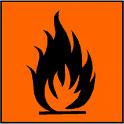Well, to kick off this return of mine to writing, here's an article on a few "advanced painting techniques" that I used before in miniature painting and I've been trying to apply to slot car painting.
To better explain, here is an example of two similarly painted bodies which only one has been painted with this new technique:

(left: Slot.It Sauber-Mercedes; right: Fly Racing Porsche 911 GT1)
You you look closer, you might find an additional effect to bring up the detail on the gaps where the real body parts show fit. Here's a close-up:
If you look at the Porsche, the black lines painted along the body part gaps and crevices help creating a more realistic effect, by bringing up the apparent visual depth of the model. Here's another example applied to a more lively color model, between two Nissan R390 in white/blue and white/red liveries:
So, as I said, this technique was not unknown to me, but I never tried it out on slot car painting, only in miniature painting. I've been doing Modelism since I was 12, starting with pretty much everything: cars, aeroplanes, whatever. Slots came much later, when I was 26. However, during much of the time in between, I've been playing a miniature wargame known as Warhammer Fantasy (know it better
here!). It's a whole different thing to slot cars, for sure, and I'm not ashamed of that part of my past... but I keep some skeletons in the closet. When I mean I have skeletons in my closet, I literally mean I DO HAVE skeletons in my closet. See to believe:

This is only a small part of my entire army of Undead creatures (if you know Lord of The Rings you have a global idea of the fantasy theme of this wargame, don't judge me on my choice!). I have taken them out of their graves... I'm sorry, their boxes I mean, for countless battles. This time I've awakened them again to show you were I learnt the two most basic techniques in miniature painting: washing and drybrushing.
Before we get started, let me just put something pretty clear to everyone: I am by no means the most gifted of miniature painters, I really just know a few basic stuff. If you really want to get rocked by the masters, see
here!
So, to demostrate the effects of washing and drybrushing, here's a close-up on one of my skeleton minions:
If it looks complicated, trust me, it isn't. The white brush was used to paint the whole miniature in a mixture of black/brown wash, which fills the holes and deep spaces. The bigger brushes were used to drybrush the miniature with a white and bone color mixture. Drybrushing lays paint on the higher areas of the miniature, leaving the holes and deeps untouched. I've already mentioned drybrush on this
article.
While the washing is fairly simple in this miniature (you just need to wash the whole thing first and then the drybrush will correct the rest), doing so in slot models is not that easy as you can't or it's better not correct it after you use it. So, it's better to use a specific wash rather than just dilluting normal paint. I use these ones, which are acrylic, from
Vallejo and
Citadel:
These washes are different to normal acrylic paints as they are specially diluted with different mediums so that the paint can hold on to the surface tension in gaps and holes. A normal paint, very diluted, is not as easily applied as washes in these surfaces.
To apply these to a slot model, you need 3 things, basically:
- the appropriate brush (a good one is required);
- being able to hold your breath for the appropriate amount of time;
- patience.
I'll be showing you the application of a wash to a NSR Porsche 917 body I've painted and which I find the looks very bland. I'll try to liven it up by creating the depth detail. Here are the materials:
We're set, let's go. It's better to clean the brush regularly during the application of the wash. Just dip the brush into the wash, set it on the gaps you want to paint and let the pigment flow from the brush into the spaces with gentle slow movements.
The wash will flow, fill in the gaps by itself without leaking out. If that happens, you can just wipe it out while it's fresh, with a cloth or even your finger!
This picture shows a comparison. Only the right side of the model was washed. Which effect do you prefer?
Well, this is it, a simple guide to explain a technique I've implemented to my artwork on slot models.
In the next weeks I'll be presenting some models I've been painting and you'll be surely seeing this technique being applied.
See you soon...



















